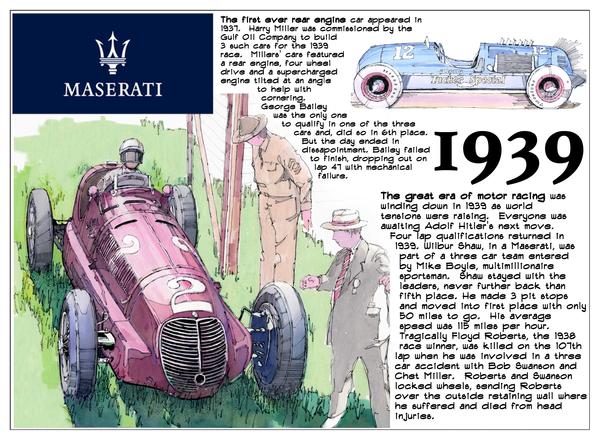- 1890s Cars
- Barney Oldfield Images
- Oldfield - Petersen
- Beer
- Early Auto Industry
- Uniontown - Marci McGuinness
- General Period Clip Art
- Early Race Related Clip Art
- Advertising and Editorial Cartoons
- Early Indianapolis
- IMS Construction
- Indianapolis Speedway
- First IMS Auto Races
- Failed 1909 Air Show
- 1909 IMS Balloon Races
- 1909 IMS Motorcycle Meet
- 1910 Indianapolis Auto Show
- 1913 Indianapolis 500
- 1919 Indianapolis 500
- Joe Dawson
- WWI "500" Winner Draft Cards
- Frank Di Buglione (off the wall art, LLC)
- Gilbert Art
- Carl Graham Fisher
- IMS Hall of Fame Museum
- Alco at 100th Anniversary
- Frederic Matile - Morris Park
- Miami-Fulford Speedway
- Paul Sheedy Collection
- Early Wyoming Racing - 1909 - 1919
- Personalities
- Early Racing Images
- Glidden Tour
- 1909 Cobe Trophy
- Fairmount Park & Belmont Estates
- Early Santa Monica
- Don Radbruch Collection
- Jeroen de Boer Collection 1910
- Jeroen de Boer Collection 1912
- Jeroen de Boer Collection 1913
- Jeroen de Boer Collection 1914
- Georges Boillot
- Story's Indianapolis 500 Cars
- Story's Sports Cars
- Story's Grand Prix Cars
- Old School
- Story's Brickyard Sketchbook
Shaw & the Mike Boyle Maserati
Photo Gallery Categories
Search
Featured Article
Image of The Week

This is David Story's rendering of 1939 Indianapolis 500 winner Wilbur Shaw in the Mike Boyle Maserati. Shaw was the historic race's first three-time champion, also winning the grueling contest in 1937 and 1940. Less well known is that Shaw not only won the "500" three times but also finished in the runner-up spot the same number of times ('33, '35, '38). Find a great story on the 1937 race elsewhere on First Super Speedway.
The 1939 "500" also had a tragic distinction. It became the first Indianapolis 500 where its defending champion was killed during the contest. In this case, it was Floyd Roberts.
As for the Maserati, virtually no one connects the dots between the Vanderbilt Cup revivals of the 1936 - 1937 and Shaw's decision to urge Boyle to make the Maserati purchase. Those revivals were on Long Island's Roosevelt Raceway cinder-surface road course and it was there that Wilbur Shaw saw the European Grand Prix cars of the age and encouraged team owner Mike Boyle to purchase one. Tazio Nuvolari won for Alfa Romeo in '36, Bernd Rosemeyer for Auto Union in '37. The American garage-designed oval-track oriented "specials" with rudimentary gearboxes were hopelessly outclassed by the Euro-engineered factory entries. Shaw knew if he could get his hands on one, he could dominate at the Brickyard.
The following is the text of David's margin notes:
"The first ever rear engine car appeared in 1937. Harry Miller was commissioned by the Gulf Oil Company to build three such cars for the 1939 race. Miller's cars featured a rear engine, four-wheel drive and a supercharged engine tilted at an angle to help with cornering. George Bailey was the only one to qualify one of the three cars and did so in sixth place. The day ended in disappointment. Bailey failed to finish, dropping out on lap 47 with mechanical failure.
The great era of motor racing was winding down in 1939 as world tensions were raising. Everyone was awaiting Adolf Hitler's next move. Four lap qualifications returned in 1939. Wilbur Shaw, in a Maserati, was part of a three-car team entered by Mike Boyle, a multimillionaire sportsman. Shaw stayed with the leaders, never further back than fifth place. He made three pit stops and moved into first place with only 50 laps to go. His average speed was 115 miles per hour. Tragically, Floyd Roberts, the 1938 race winner, was killed on the 107th lap when he was involved in a three-car accident with Bob Swanson and Chet Miller. Roberts and Swanson locked wheels, sending Roberts over the outside retaining wall where he died from head injuries."
| Attachment | Size |
|---|---|
| 1939 Indy 500.jpg | 3.25 MB |
